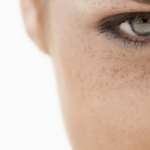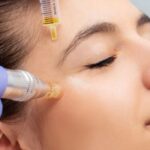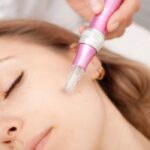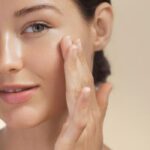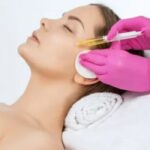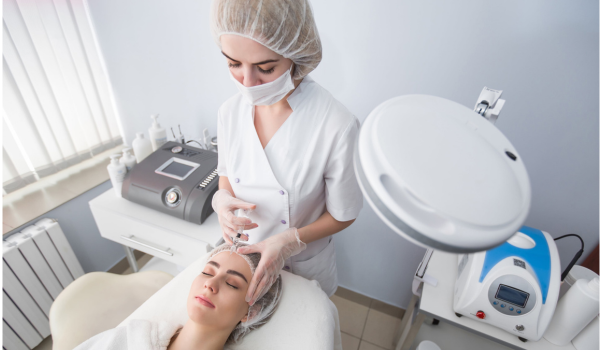
Skin resurfacing has emerged as a cornerstone treatment in dermatology and aesthetic medicine, offering solutions for a wide range of skin concerns. This blog delves into what skin resurfacing entails, its types, benefits, and the considerations to keep in mind before undergoing the procedure.
What is Skin Resurfacing?
Skin resurfacing is a dermatological treatment aimed at removing the damaged outer layers of skin, promoting the regeneration of fresh, healthy skin cells. This process helps address issues like fine lines, wrinkles, acne scars, pigmentation, and uneven texture, leaving the skin smoother and more youthful.
The procedure works by stimulating the skin’s natural healing mechanisms, promoting collagen production, and improving overall skin quality. Skin resurfacing can be tailored to suit individual skin types and concerns, making it a highly versatile treatment.
Who Can Benefit from Skin Resurfacing?
Skin resurfacing is ideal for individuals looking to:
- Diminish fine lines and wrinkles.
- Reduce the visibility of scars, including those from acne.
- Correct uneven skin tone and pigmentation issues.
- Improve skin texture and firmness.
- Address sun damage and age spots.
It is suitable for various skin types but requires a thorough consultation with a qualified dermatologist or aesthetician to determine the best approach.
Types of Skin Resurfacing Procedures
There are several techniques for skin resurfacing, each with unique benefits. The choice of method depends on the individual’s skin concerns, desired outcomes, and skin sensitivity.
1. Laser Skin Resurfacing
Laser technology is a popular choice for skin resurfacing due to its precision and effectiveness. It uses focused light beams to target and eliminate damaged skin cells.
Ablative Lasers: These lasers, including CO2 and Erbium lasers, work by eliminating the outer layers of the skin. They are ideal for treating deep wrinkles, scars, and severe sun damage but require a longer recovery period.
Non-ablative lasers promote collagen production while preserving the skin’s surface layers. They are less invasive and have minimal downtime, making them suitable for mild skin concerns.
2. Chemical Peels
Chemical peels involve applying a solution to the skin to exfoliate and peel away damaged layers. The peel’s depth can be tailored to address particular concerns:
Superficial Peels: Use mild acids like glycolic acid for light exfoliation.
Medium Peels: Use stronger acids like TCA (trichloroacetic acid) for deeper penetration.
Deep Peels: Employ phenol for significant skin rejuvenation but require extensive downtime.
3. Microdermabrasion
This non-invasive procedure uses a device to exfoliate the skin gently, removing the outer layer and stimulating cell turnover. It’s best for mild skin imperfections and requires no downtime.
4. Dermabrasion
Unlike microdermabrasion, dermabrasion is a more intensive procedure. It involves the controlled removal of the skin’s top layers using a rotating tool. Dermabrasion is particularly effective for deep scars and wrinkles but requires a longer healing period.
5. Plasma Skin Resurfacing
Plasma technology uses ionized gas to create controlled micro-injuries in the skin, stimulating collagen production and tightening the skin. This technique offers minimal downtime and can be used on sensitive areas like the eyelids.
What to Expect Before, During, and After the Procedure
Consultation: A thorough assessment of your skin is necessary to determine the appropriate resurfacing method.
Pre-Treatment Care: This may include avoiding sun exposure, stopping certain medications, and using prescribed skin care products to prepare your skin.
The Procedure: Depending on the method, the session can last between 30 minutes to two hours. Some treatments may require local anesthesia or sedation.
Post-Treatment Care: Proper aftercare plays a vital role in achieving the best possible outcomes. This includes:
- Avoid direct sun exposure and use sunscreen.
- Applying moisturizers or healing ointments as prescribed.
- Following a gentle skincare routine.
Recovery times vary, with less invasive procedures requiring little to no downtime and more intensive treatments needing several weeks.
Potential Risks and Precautions
While skin resurfacing is generally safe when performed by experienced professionals, potential risks include:
- Redness and swelling.
- Sensitivity to sunlight.
- Temporary or permanent pigmentation changes.
- Rarely, scarring or infections.
- Choosing a certified and skilled practitioner significantly reduces these risks.
Advantages of Skin Resurfacing
Rejuvenated Appearance: Achieve smoother, youthful skin by reducing imperfections.
Boosted Confidence: Improved skin quality often leads to greater self-esteem.
Customizable Solutions: Treatments can be tailored to meet individual needs.
Long-Lasting Results: With proper care, the benefits of skin resurfacing can last for years.
Is Skin Resurfacing Right for You?
Skin resurfacing is a transformative procedure, though it may not be appropriate for all individuals. Individuals with certain medical conditions, active skin infections, or a history of poor wound healing should consult a professional to explore alternatives.
Choosing the Right Clinic
The success and safety of skin resurfacing primarily rely on the practitioner’s expertise and the clinic’s quality. Look for:
- Qualified dermatologists or aestheticians.
- State-of-the-art equipment and facilities.
- Positive reviews and testimonials.
- Transparent communication about costs, expected outcomes, and potential risks.
Skin Resurfacing: A Path to Radiant Skin
Skin resurfacing is a highly effective way to restore your skin’s natural beauty and address various imperfections. By understanding the different techniques and choosing the right practitioner, you can unlock the full potential of this treatment.
Summary
For the best skin resurfacing treatments tailored to your unique needs, visit the Dr. Chahal Aesthetic Clinic in Bangalore. Their expert team combines advanced technology with personalized care, ensuring optimal results for every client.
